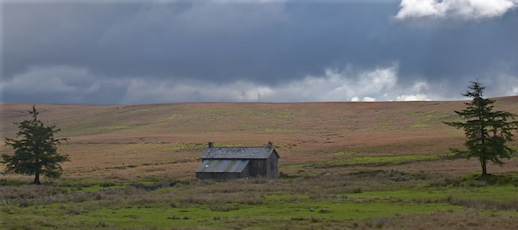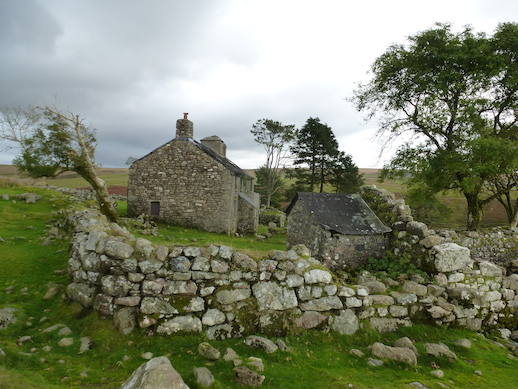The Scout Hut Walk
Words and pictures: Alex Smith
I bought two Barnsley chops from the butchers before we left Yelverton and slotted them securely into the inside pocket of my rucksack, the one that is ordinarily reserved for upright bottles, and left them wrapped up in their butcher’s greaseproof paper but without their thin plastic bag that to my mind would only encourage sweating. Not at the bottom to be knocked about and bruised by the flask and not at the top to be removed on any subsequent search for coat or sustenance, but between the main space and my back to encourage a regular frottage for the duration of the walk and a chance to bring the meat up to the temperature of the moor. I likened it to the cowboy placing his steak under the saddle to tenderise it on the long days of the round-up. With just a little less groin.
Three of us on this walk and, tidily, three Dartmoor buildings to visit. We started by parking at the first, formerly Ditsworthy Bungalow but now widely known as the Scout Hut. Completely surrounded by trees and seemingly occupied at the time by army types, we walked on by. More than anything, we wanted to get the most out of the sunshine that had treated us well up to that point but was forecast to hide behind the clouds within the next hour or so.
Nun’s Cross Farm is the next building on our walk and the next waypoint on this track, a route ordinarily busy because of its onward direction to Princetown and its Bridleway status that invites the mountain biker. Today it was all but untraveled. The farm was all locked up, as usual, but there were signs of stewardship in the bolts and the padlocks and the recent pointing. The farm was in one of its rarely-seen photogenic moods, the recently arrived low, dark, cloud giving the solitary building a sinister edge but the space around it and the trees either side framing it perfectly for my lens and lending a definite American wide-open-spaces feel as I made my way down from the cross.
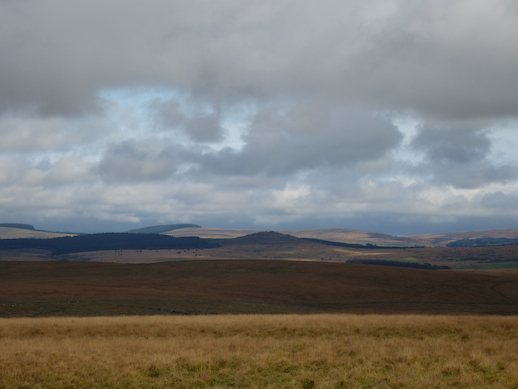 Views North and East from Foxtor, towards Bellever and Fernworthy
Views North and East from Foxtor, towards Bellever and Fernworthy
The views North and East from Fox Tor were layered. Distinctly coloured layers, much like the strata of those differently coloured but complimentary sands you used to see in glass jars at school, but shades of green and grey and black and blue as they worked their way up the vista. The lighter green grass around our feet gave way to the darker, shadowed, grass of Fox Tor Mires 100 metres down below us and then over the Swincombe River and to the lighter slopes that caught the sun on their way up to Royal Hill, and then to the next dark layer, wooded areas of the sprawling Dartmoor Forest: Bellever Woods and the Snider Park Plantation, Soussons Down, Dunnabridge Plantation and, in the very distance, the imposing Fernworthy Forest, each of these then layered above and below by the various intervening grassy high grounds of Riddon Ridge and White Ridge and Down Ridge, they themselves either darker or lighter depending on whether or not the sun was getting through. The layers continued into the sky. From this high point we could see the tops and bottoms of the nearer clouds as they passed, and sometimes the bottoms were rain bearing and moody, and sometimes there was sky above their tops and often there were the tops and bottoms of far off clouds that filled the space between these closer clouds and the ground, layer under layer under layer, all the way down to the horizon.
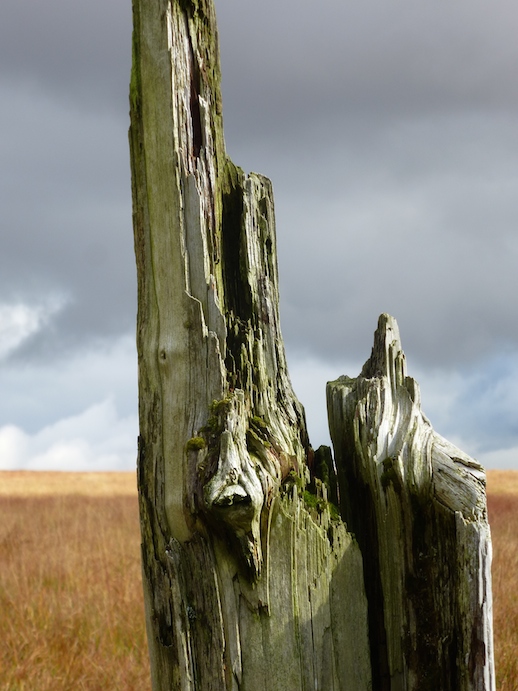 Detail of post, South of Fox Tor
Detail of post, South of Fox Tor
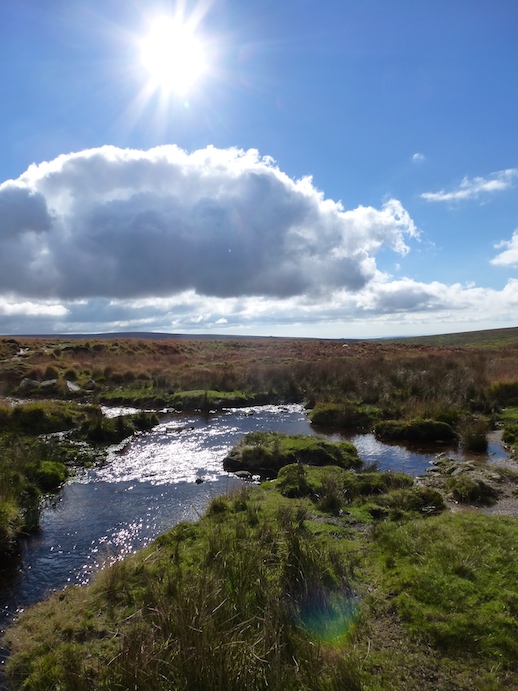 Plym Ford
Plym Ford
South from Fox Tor and a regrouping at the post at the end of Black Lane, a post now broken and rotten and hardly worth the mention it gets on the map, but a waypoint, still, and a magnificently eroded one to boot, standing out proud with its pubis of longer grass set against the shorter pink of the autumn tundra that surrounds it. A wet walk over the high ground of Crane Hill took us to Plym Ford and a short break. From there it was through Evil Combe and a path that took us well below Higher Hartor Tor but close enough to Lower Hartor Tor to leave the track to climb the rocks for views down onto the Plym, by now well below us, and over to a Langcombe Hill that changed in real time as cloud shadow raced over it, the leading edge chasing over the many visible cairns and cists and the remains of blowing houses and into and out of Langcombe Brook and Deadman’s Bottom, giving a flavour of the topography ordinarily denied us by the flattening effect of all that grass.
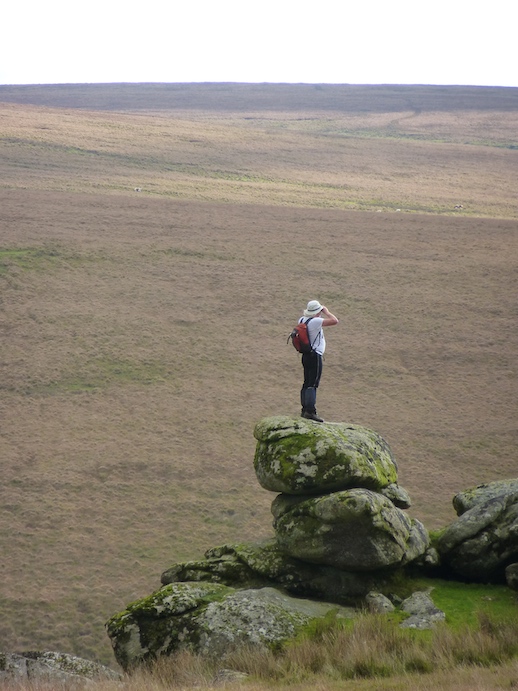 Lower Hartor Tor with views over the valley to Langcombe Hill
Lower Hartor Tor with views over the valley to Langcombe Hill
From there to the settlements and the stone row and the massive 12 foot standing stone of the Giant’s Basin and then on past more settlements to the third of our Dartmoor buildings, Ditsworthy Warren House, which once supplied Bidders with rabbits enough to clad the frontage with their furred frames and to obscure all but the door and part of the window in a favourite Victorian photograph. From a time when rabbit made up a large part of the local diet and the dogs lived in the walls of the enclosure.
All that was left was to round Eastern Tor and to flow up Edward’s Path to the gate and then roll down the scrub of the last bit of hill, the vinegar strokes of Gutter Tor, on the way to the car. Not a long way, this walk, this late-planned getting out, but the shots looked good on the camera and there was moorland meat for tea and the company was good and the weather did not just hold out but gave the day so much light and shade. All in all a better one.
